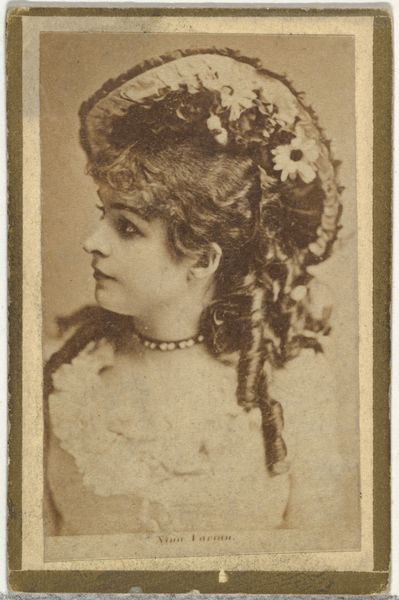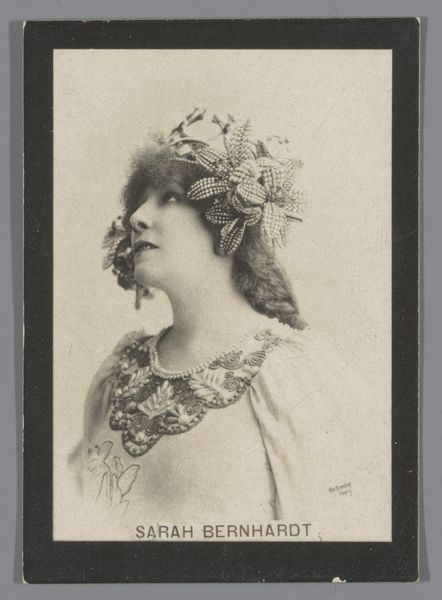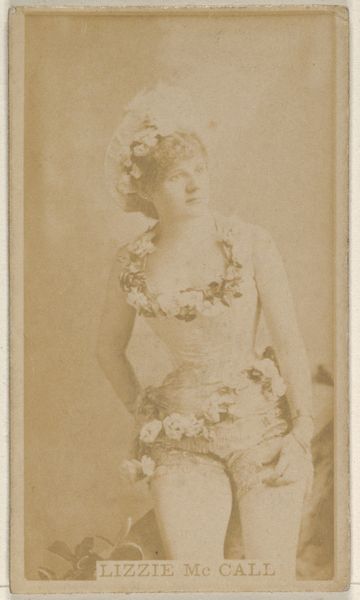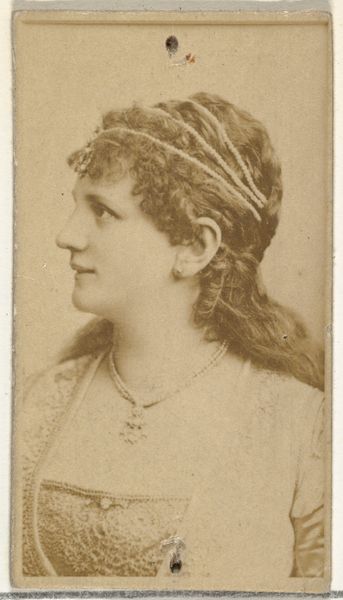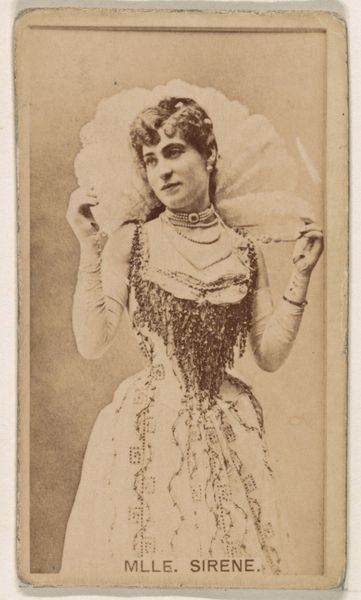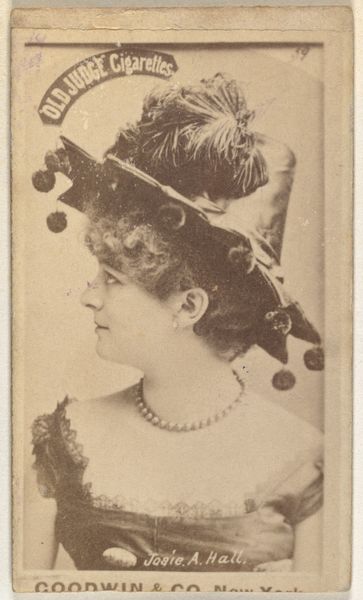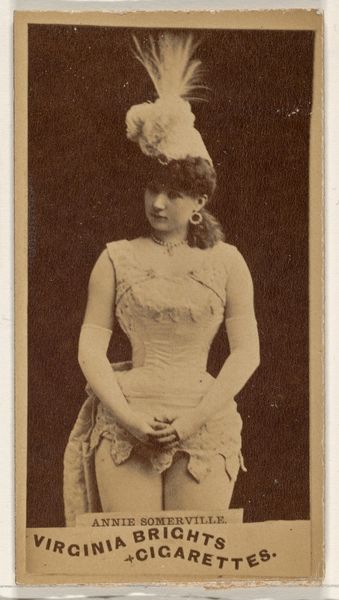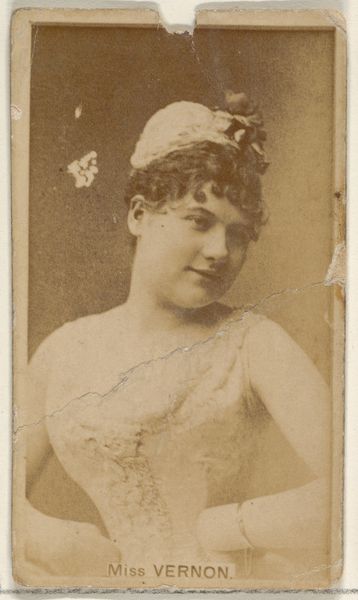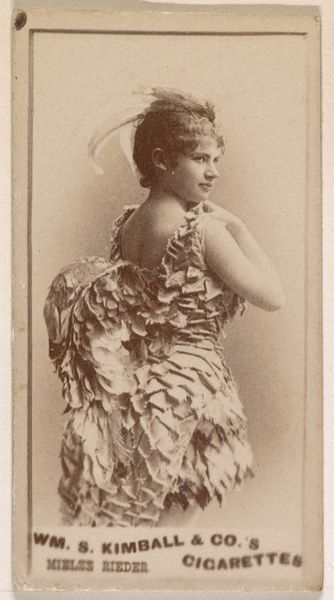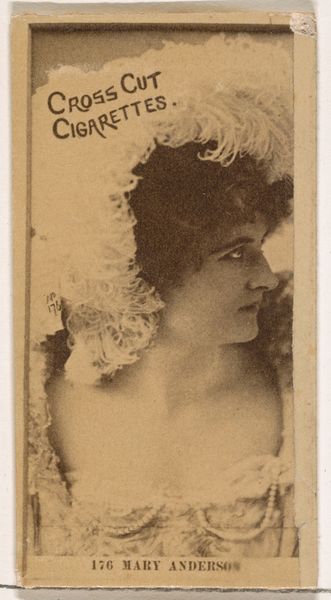
Madge Bannister as "The Fisher Maiden," from the series Fancy Dress Ball Costumes (N73) for Duke brand cigarettes 1889
0:00
0:00
drawing, coloured-pencil, print, watercolor
#
portrait
#
drawing
#
coloured-pencil
#
water colours
# print
#
caricature
#
watercolor
#
coloured pencil
#
coffee painting
#
genre-painting
Dimensions: Sheet: 2 3/4 x 1 1/2 in. (7 x 3.8 cm)
Copyright: Public Domain
Curator: This whimsical little print is titled "Madge Bannister as 'The Fisher Maiden,'" made around 1889. It’s from a series of fancy dress ball costume cards created for W. Duke, Sons & Co. cigarettes. What are your first thoughts? Editor: My first thought is, wow, that is a literal interpretation of "fisher maiden"! I find myself pondering the role of women in advertising—even in something seemingly as innocent as a cigarette card. It’s a strange mix of aspiration and... objectification. Curator: These cards were wildly popular, acting as both advertisements and collectibles. They offer us a snapshot into the late Victorian era, including popular actresses and fashionable costumes. Madge Bannister here is depicted wearing a pink shawl with ornamental fishes and she has, quite literally, a fishbowl perched on her head! Editor: Exactly. It strikes me as absurd. Is it poking fun? Or seriously suggesting women parade themselves as commodities? I think about the labor involved in creating these intricate outfits—presumably made and styled by women behind the scenes, for other women's enjoyment… and, ultimately, for selling cigarettes. It's the commodification of everything feminine! Curator: And how those images spread... The cards fostered a sense of celebrity culture, but filtered through the lens of commercialism and a limited visual language. These cards contributed to a broader visual culture, one shaped by commercial interests. Editor: It does make you wonder about the gaze—who was really the intended audience here, and what ideas about women and performance were being reinforced? And what were the messages being sent with that fishbowl hat and the gold string hanging down? Curator: Indeed, the symbolism is fascinating. Fish were a popular symbol at the time, sometimes referencing prosperity, sometimes something deeper. The gold beads may be symbolic of a rich life that could come true when smoking the right brand of cigarettes. But I also think these prints show how dress became important beyond the stage, permeating public life. Editor: Right. It's not *just* entertainment, it's marketing itself into everyday life, molding public imagination around smoking. Curator: Well, these trading cards have definitely given us much to think about regarding societal expectations and gender roles of the period. Editor: Agreed. Peeking into the past reminds me how the present carries so much unexamined cultural baggage.
Comments
No comments
Be the first to comment and join the conversation on the ultimate creative platform.
